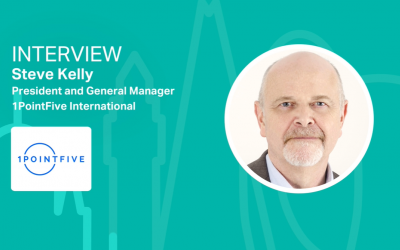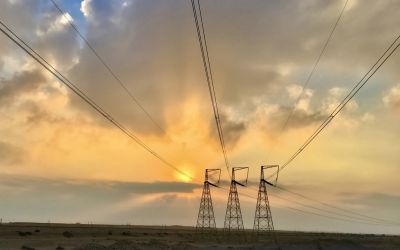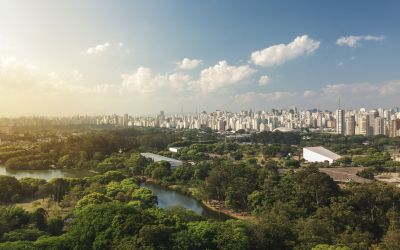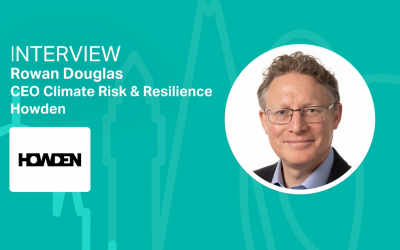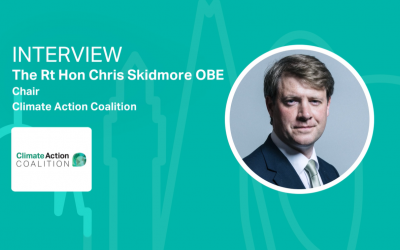Stephane Germain, GHGSat, on the critical role of measuring progress for investors
Ahead of the Sustainable Innovation Forum 2020 taking place across 5 days from the 16-20 November, we caught up with Stephane Germain, President at GHGSat, to discuss transparency and the critical role of measuring progress for investors.
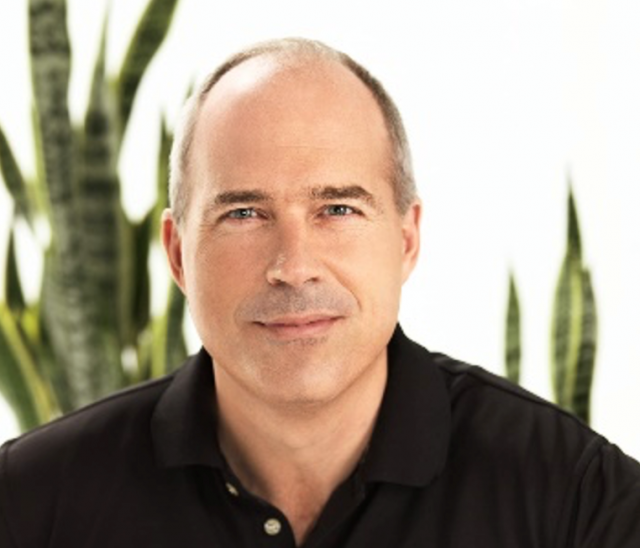
Ahead of the Sustainable Innovation Forum 2020 taking place across 5 days from the 16-20 November, we caught up with Stephane Germain, President at GHGSat, to discuss transparency and the critical role of measuring progress for investors.
For our readers who might not know about GHGSat, can you tell us who you are and how you began?
GHGSat is the global leader in high-resolution remote-sensing of greenhouse gas from space – an approach it pioneered - and provides unique emissions data and AI-driven insights to businesses, governments, and regulators, worldwide to optimize their performance and uphold environmental standards.
In 2016, GHGSat launched the world’s first high-resolution satellite capable of measuring greenhouse gas emissions from any industrial facility in the world. In September 2020, GHGSat launched Iris, reaching new heights as its second satellite detects the smallest methane emission (from space).
We are working towards our emission monitoring constellation; we will launch 9 satellites by the end of 2022. Hugo, our next satellite, will launch within the next month.
As a team of engineers, scientists, data analysts, and sector specialists, we believe this is the best contribution we can make towards a cleaner future.
You have a really exciting new technology and impressive mission. Can you please tell our readers a bit more about the technology, its application and the industries you support?
While government GHG sensors in orbit provide regional scale measurements and global trends, GHGSat’s satellites are specifically designed to detect and quantify methane emissions from individual facilities.
Our unique sensing technology can detect methane emissions from sources 100 times smaller than any other satellite, but with a resolution 100 times higher. No other commercial operator or state-funded space organization has this capability in orbit.
Producing the best quality data is only half of what we do. Making it useful is equally as important. Using proprietary AI and machine learning algorithms, we combine information from our own satellite and airborne sensors with data from other sources such as public satellites and ground databases to develop innovative new solutions.
One example is a Risk Index for the oil and gas sector, which predicts where methane leaks are most likely to occur. This information not only helps GHGSat better direct its high-resolution satellite observations to identify leaking infrastructures, but it also provides critical insight to the financial sector by helping to guide decisions on responsible investing.
Markets: Oil&Gas, Mining, Waste Management, financial markets, governments and regulators.
You plan to release a high-resolution global methane map at COP26 next year in Glasgow. Can you tell us about this and what you foresee it achieving?
Actually, it is available now as part of the commitment we made earlier this year for COP26. The objective is to raise awareness and open the dialogue around methane, making this invisible gas visible.
We are working on a more advanced version of PULSE, to show methane concentrations as well as emissions – globally, on the same grid and with an even higher frequency. This matters because concentrations tell us how much gas there already is in the atmosphere: emissions reveal the rate at which methane is being added. Knowing this allows for the continuous quantification of gas emissions inventories, at any geographic scale (local, province, state or national). decisions on responsible investing.
You can find out more here.
One of the biggest challenges that must be overcome at COP26 next year is around the global carbon market and article 6. Many believe this to be the only way we can drastically realign economic value with the environment. What are your thoughts on this?
GHGSat is born out of the need for consistent, reliable data of ghg emissions on which a carbon market is ultimately dependent upon. We therefore strongly support the creation of a global carbon market.
Setting targets is one thing but actually measuring these is often the hardest part. What impact is GHG looking to have when it comes to emission and GHG reporting for regions and industries?
It is increasingly clear that climate is the most important issue humanity faces because practically everything we do contributes to its effects and everything we rely on is influenced by its consequences.
Businesses are aware that their ‘license to operate’ is based on public trust, not just compliance with technical stipulations. Investors recognise this too, which is why we increasingly see companies pledge to exceed environmental standards, not just comply with them. By providing trustworthy information about greenhouse gas emissions, GHGSat supports the global move towards greater transparency.
Significantly improved emissions information is enabling industries to better measure, control, and ultimately reduce emissions of GHGs.
With just 12 months to COP26, what must be done, what key actions must we see and what would you demand from businesses and governments ahead of these crunch negotiations?
I would like to see continuing pledges from govenments and industry to Net Zero and commitments to work towards a global carbon market.
Stephane Germain will be speaking at Day 4 of the Sustainable Innovation Forum 2020. Join him and other industry leading experts by registering for free today.

